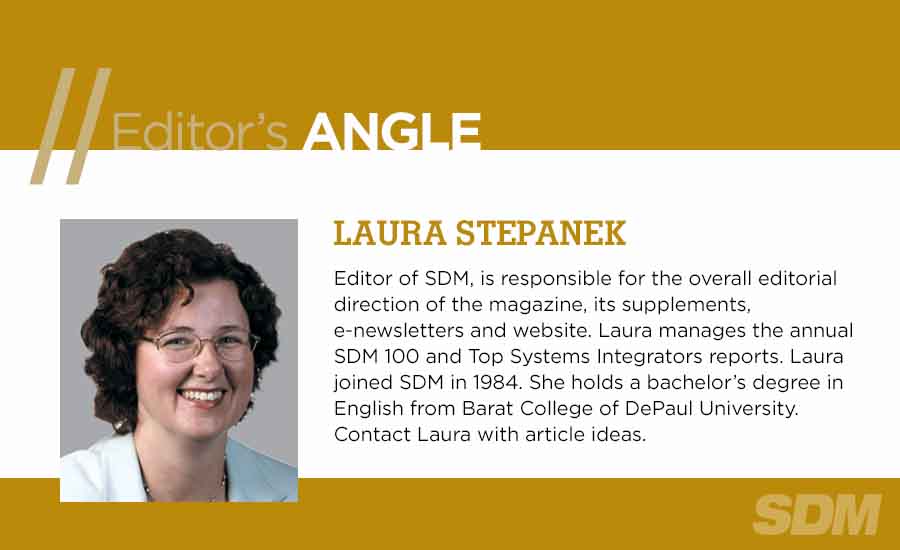Back in the day, “the establishment” was something the younger generation of the 1960s didn’t trust because it referred to a group that included elite government officials, the media and large corporations — and it usually meant that two or more of these entities were thought to be in cahoots.
It might not be any more popular today to trust the government, but in some cases, the government — federal, state or municipal — can actually help your business. When and how? Specifically, it’s when government-mandated regulations imposed on your end user customers require them to implement certain security systems or services. Such regulations create opportunities for the security integrator who is qualified and perhaps even certified to help customers meet those regulations.
Growth through regulation was a theme of this month’s cover story, “20th Annual Top Systems Integrators Report.” Over and over, when asked about market conditions and growth sectors, systems integrators mentioned regulatory requirements as drivers.
“As the economy continues to improve, capital spending seems to be increasing. Also, we focus much of our attention on regulated industries. The NERC-CIP requirements in the energy sector have driven the demand,” stated G4S Technology Inc., ranked No. 8.
Described No. 5-ranked Johnson Controls: “The market is definitely improving overall — driven by pent-up demand, continued migration to IP and network technologies, as well as regulatory changes. There has been more interest by customers (owners/facility managers) in improving the security implementation within their facilities to manage risk and meet regulations.”
According to Firstline Security Systems Inc., ranked No. 45, better funding for security projects in 2014 was stimulated by “a better economy and regulations for mandatory work in some markets.”
And for Securadyne Systems LLC, ranked No. 11, “The market continued to expand, allowing us to grow bookings by 17 percent organically. We expect continued strength, growth and demand for our services, especially in market segments facing regulatory compliance challenges such as oil and gas, electrical utilities, and food and beverage.”
More regulations per industry or more industries being regulated equates to more opportunities for security systems integrators who are qualified to help the end user comply. The largest of systems integrators employ market sector leaders whose responsibility is to know the intricacies of their customers’ businesses and regulatory requirements. In today’s regulatory environment, smaller integrators would do well to adopt a similar structure.
What Our Columnists Have to Say This Month
Marketing Madmen
Madmen Alex Chavez and David Morgan offer three things for systems integrators to focus on in order to stand out from the pack.
Today’s Systems Integrator
Not everyone can be the low-cost leader. Columnist Paul Cronin explains how integrators can determine what their market strategy is and then begin to plan ways to transform their business — getting out from the middle.
Sales Stars
The worst problems are those that could have been avoided, and columnist Brian Offenberger describes several common mistakes salespeople make and how to avoid them.
Home Technology Now
Many years in the making, ANSI Standard J-STD-710 audio, video and control architectural drawing symbols define a common set of blueprint icons designed to communicate full device and technology placement up front.
5-Minute Tech Quiz
Columnist Roy Pollack examines the requirements of NFPA 1: Fire Code.
Security NetWorkings
Columnist Dave Engebretson discusses disruptive technologies in the security industry and ways these technologies can help industry professionals better define themselves and their services.


